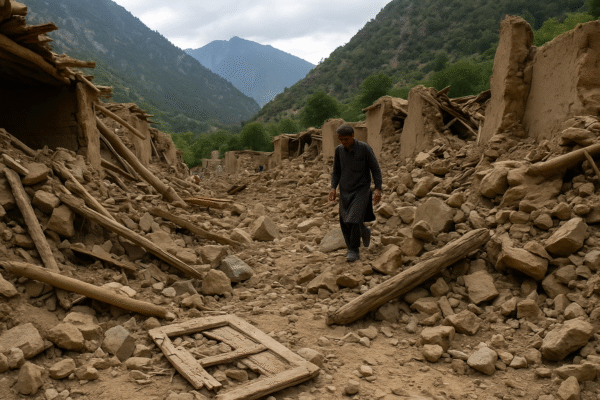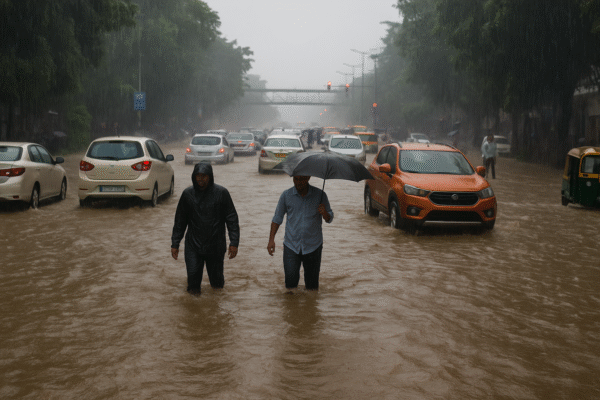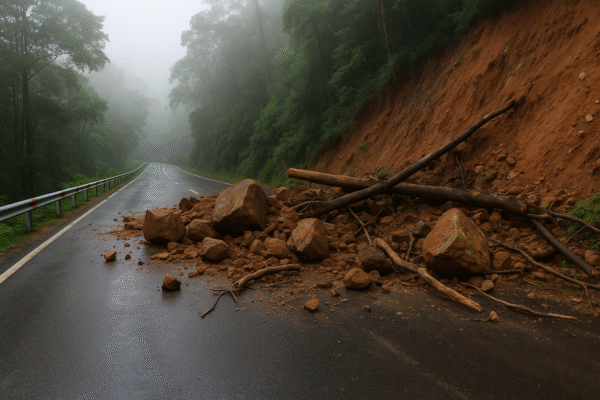Kerala’s tourism season has hit an unexpected setback as the state government has temporarily restricted tourist entry at Thamarassery Ghat, one of the most scenic routes in the Western Ghats. The restrictions come in the wake of a major landslide that struck the area just days before the Onam festival, a time when domestic and international travelers flock to the region to celebrate and enjoy Kerala’s lush landscapes.
The landslide, triggered by heavy monsoon rains, sent massive boulders, uprooted trees, and large volumes of soil tumbling down the hillside. This debris completely blocked a significant stretch of the National Highway that runs through the ghat, forcing an immediate suspension of vehicular and pedestrian movement. Authorities were quick to seal the route, stressing that the safety of travelers could not be compromised during this festive season.
Thamarassery Ghat – A Jewel of Kerala Tourism
Thamarassery Ghat, also known as the Wayanad Churam, connects Kozhikode to Wayanad and is renowned for its 9 hairpin bends, mist-covered viewpoints, and dense forests. It is a lifeline for travelers heading towards Wayanad’s wildlife sanctuaries, waterfalls, and tea plantations. During Onam, this route becomes especially popular as thousands of visitors travel to the hill stations for festivities and sightseeing.
However, the same steep slopes and fragile terrain that make Thamarassery Ghat breathtaking also make it vulnerable to landslides. Seasonal monsoon rains loosen the soil, and continuous downpours often weaken slopes, increasing the risk of sudden collapses. The recent landslide has once again highlighted the delicate balance between tourism and nature in Kerala’s highlands.
Details of the Restrictions
The Kerala government has announced a three-day restriction period beginning Thursday, during which all tourist entry to the ghat is suspended. This includes bans on vehicle parking, roadside gatherings, and visits to popular viewpoints. One of the most notable closures is the 9th hairpin bend, the exact spot where the landslide occurred.
Emergency response teams have been deployed to monitor the site, remove debris, and stabilize the affected slope. While local residents rely heavily on the ghat for daily commuting, the government has prioritized safety by diverting essential traffic and restricting leisure travel until the area is declared secure.
Recovery Efforts Underway
In the aftermath of the landslide, large teams of workers, supported by heavy machinery, were dispatched to clear the highway. The process of removing fallen boulders and soil was time-consuming and required precision to avoid triggering further slides. After clearing the immediate debris, geologists and engineers conducted inspections to assess the risk of recurring landslips.
Road safety reinforcements, including slope stabilizing measures and improved drainage systems, are now being considered to prevent similar disruptions in the future. Officials emphasized that the clearance operations are not just about reopening the road but ensuring the long-term safety of both locals and tourists.
Tourist Impact During Onam
For many tourists who had planned to visit Wayanad during Onam, the restrictions have caused inconvenience. Local businesses such as homestays, resorts, and eateries that thrive during the festival season are also experiencing cancellations and reduced bookings. However, tourism officials believe that the temporary ban is a necessary precaution and will ultimately reassure visitors about the state’s commitment to their safety.
Kerala Tourism has encouraged travelers to explore alternative destinations within the state until Thamarassery Ghat fully reopens. Attractions like Athirappilly Waterfalls, Munnar, and Alappuzha backwaters remain unaffected and continue to welcome visitors.
Broader Challenges for Hill Tourism
The landslide at Thamarassery Ghat is not an isolated incident. Kerala, with its rugged terrain and heavy monsoon patterns, has faced recurring challenges from landslides in recent years. Districts such as Idukki, Wayanad, and Kozhikode remain particularly vulnerable.
These natural calamities highlight the need for sustainable tourism planning. Experts recommend stricter land-use policies, early warning systems, and regulated construction in hilly regions. The government has also been urged to improve weather forecasting systems and issue timely advisories for both locals and tourists.
Future of Thamarassery Ghat Tourism
Despite the setback, Thamarassery Ghat remains one of Kerala’s most iconic travel corridors. Once clearance and safety checks are complete, the ghat is expected to reopen, attracting nature lovers, bikers, and adventure seekers once again.
Officials are optimistic that the recovery operations will lead to improved infrastructure, with stronger roads, enhanced safety barriers, and better tourist facilities. This incident also serves as a reminder of the importance of responsible travel—tourists are urged to follow official advisories, avoid restricted areas, and prioritize safety over sightseeing.
Conclusion
The temporary restrictions at Thamarassery Ghat reflect Kerala’s proactive stance in ensuring the safety of both residents and tourists during a vulnerable time. While the landslide has disrupted Onam tourism, it has also sparked discussions about the future of sustainable travel in the Western Ghats.
With recovery efforts in full swing and safety measures being reinforced, Thamarassery Ghat is expected to regain its place as a top destination in Kerala. Until then, visitors can look forward to exploring other parts of God’s Own Country while awaiting the safe reopening of this breathtaking mountain pass.
For more travel news like this, keep reading Global Travel Wire

















